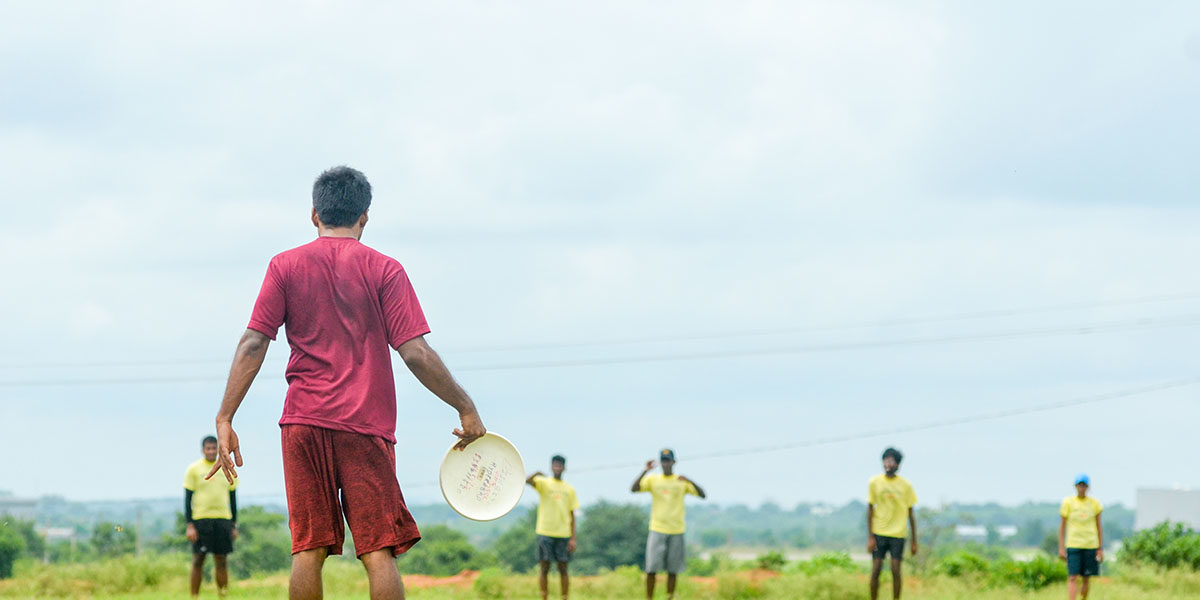 Photo by Deepthi Indukuri
Photo by Deepthi Indukuri
After the newest WFDF rules update regarding gender mix, one thought has plagued me: Why is it so complicated to achieve gender balance in mixed ultimate? The two approaches of WFDF Rule A and Rule B (WFDF 2017 Rules, Appendix A.7) hardly make things easy. As a fan of Antoine de Saint-Exupéry’s philosophy of perfection in simplicity, this complication has bothered me heavily.
Once I decided that adjusting the number of players not only simplifies, but also addresses a number of issues, I find it hard find any sense in a 7v7 game.
This post has one simple goal: To start the discussion about adjusting player numbers to 6v6 for grass ultimate. Analogously, to adjust to 4v4 on beach—knowing well that some tournaments (like Boracay Open) already follow that format.
The way I see it, there are a number of benefits in 6v6 (4v4):
- Gender Balance: For mixed, the gender ratio becomes super simple. The same amount of players for both gender. No more need for hand signals, between point, extra flips and remembering end zones. Admittedly, this is my single biggest reason for this change.
- Fairer Touches: Less players means less opportunities for players to hide, but more so to be looked off. Not utilising certain players gets harder and more painful with less players. So teams are incentivised to involve and grow all players even more.
- Less Space: To keep the dynamics and player-to-space ratio closer to current levels, having fewer players would allow the fields to be narrowed while keeping the length. A narrower field will affect strategies to a point (centered vert-stack may be tougher), it will improve fitting ultimate fields onto other sports fields. Suddenly Europeans might fit two ultimate fields onto a football field without too much of a squeeze.[footnote number=1]At 37x100m, a regulation size ultimate field leaves each player with about 528 sqm to cover. For six players, we can shrink the field to 32m width at the same length to maintain the same area to be covered. For two fields side-by-side, this means a total width of only 67m (instead of 77m) will be needed. As football fields are standardised to 45–90m width, this is a significant saving.
[/footnote] - Smaller Rosters: If we want to be Olympic, smaller rosters will be better as the games work with athlete quotas. And while we can debate IF ultimate should be Olympic, I definitely agree with Beau Kittredge’s view that beach ultimate would be perfect—and preferably 4v4. Either way, even other tournaments may benefit from smaller numbers of athletes to be catered to.
- More Exciting: Less players will mean more responsibility and impact by players. And if we choose to not shrink the space as much (as implied in #3), the more space available will allow for more exciting game-play. Anybody that has seen the Boracay Dragons play 4v4 compared to their 5v5 style can attest that.
Of course, there are drawbacks to every change:
The main drawback is the temporary time of transition and adjustment of tactics. As mentioned, a central vert-stack may become harder on a narrow field. Zone defence may have to look different with the less players. However, these are temporary problems that will fade away soon with the sport reaching this next chapter with the benefits remaining.
What do you think? Besides habit, any other big reason to hold on to 7v7 ultimate? As far as I understand, the original game had no real player count restriction, but I could not find a source for the reason to go with 7v7—anybody any intel on that?
Please discuss in the comments below.









Comments Policy: At Skyd, we value all legitimate contributions to the discussion of ultimate. However, please ensure your input is respectful. Hateful, slanderous, or disrespectful comments will be deleted. For grammatical, factual, and typographic errors, instead of leaving a comment, please e-mail our editors directly at editors [at] skydmagazine.com.